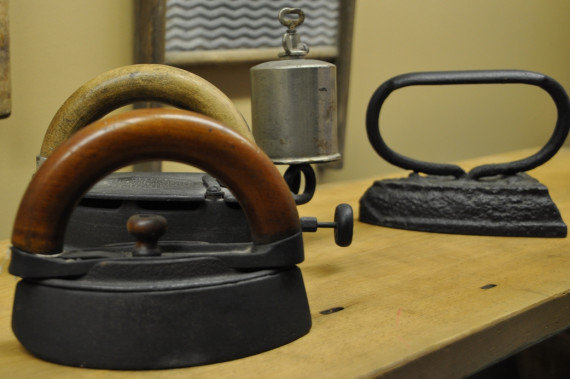Women.5.jpg

Collection of flatirons or "sad irons," 19th century.
The task of ironing was an arduous job. Ironing took an entire day and usually followed washday. To iron properly, a woman required a skirt board, a bosom board (for shirtfronts), a sleeve board, an ironing table, a dish with water and sponge to dampen clothing, a fluting iron and fluting scissors to finish ruffles, a number of flat irons that usually weighed five to eight pounds each, cotton holders to wrap around the hot iron handles, a fire in the stove to keep the irons hot, and beeswax to keep the iron from sticking to fabric.
(Missisquoi Historical Society Collections)
The task of ironing was an arduous job. Ironing took an entire day and usually followed washday. To iron properly, a woman required a skirt board, a bosom board (for shirtfronts), a sleeve board, an ironing table, a dish with water and sponge to dampen clothing, a fluting iron and fluting scissors to finish ruffles, a number of flat irons that usually weighed five to eight pounds each, cotton holders to wrap around the hot iron handles, a fire in the stove to keep the irons hot, and beeswax to keep the iron from sticking to fabric.
(Missisquoi Historical Society Collections)